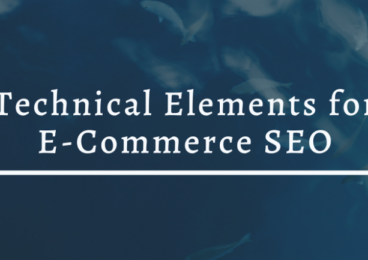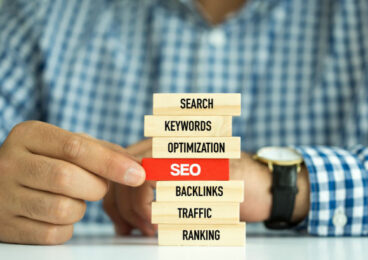 Reading Time: 4 minutes
Reading Time: 4 minutesHas your company been using Facebook and other social media accounts to reach out to customers? If so, you’re in good company – there are over 60 million business and fan pages geared toward sharing the products, services, or even simply the personality of businesses worldwide, and experts expect this number to grow to access the nearly 2.3 billion monthly active users worldwide.
However, if you’ve been looking at your business’s Facebook page lately and wishing it went even the slightest bit above and beyond the classic Facebook page format, you aren’t alone. In fact, other business pages and fan pages have been using a markup language to transform their Facebook pages into beautiful, functional pages that operate more like business web pages than social media, right within Facebook’s framework. How? The methods have changed over the years.
What Was Facebook Markup Language?
Facebook markup language, or FBML, was a markup language similar to HTML that allows users to alter the appearance, style, and functionality of a business Facebook page. FBML was only available for owners of a business or fan page, and remains completely up to the owner’s whim, meaning that the owner or someone he or she chooses, will need to perform all markup work on the page. With the use of FBML, business owners could improve the look of their page and add unique features, capturing user attention much more effectively than traditional pages.
In addition, the use of FBML increased the utility of the page directly from Facebook. This improvement of the user experience gives the user a better idea regarding the business’s product or service offerings, which can lead to increased customer engagement. More engagement with a higher quality social media page ultimately means more click throughs to your website and more conversions for your business.
Changes Came in 2011
In 2011, Facebook announced that it would no longer support FBML, and would implement a tiered removal of all FBML support beginning in mid-2011. The site allowed no new uploads of FBML apps and halted support and bug fixes in early 2012. Finally, in June 2012, Facebook removed all use of FBML, including the tabs users used to give business pages the feel of external business pages within the Facebook site.
When the transition occurred, Facebook encouraged all FBML users to switch to iFrame applications for tabs and apps similar to what FBML used to present. In fact, iFrames actually preceded FBML because they were a simpler version of what FBML did; however, iFrames allow even more flexibility. Read on for more information about iFrames and the current state of the Facebook Business Page.
Claim Your Free Social Media Audit
What Are iFrames?
iFrames are fairly standard HTML tags that simply allow you to insert one page into another. Within the context of this article, you could insert your business website into your Facebook business page. Previously, Facebook identified security issues, fixed during Facebook’s experimentation with FBML.
iFrames were the means by which developers produced Facebook apps for insertion directly into a custom Facebook page. For business owners and marketers, iFrames gave you the opportunity to create content specifically to market your business and then insert it into a custom tab on your Facebook business page, giving it the full functionality you’d expect from your external page. Similar to the previously mentioned attributes of FBML, iFrames custom pages gave your potential customers the opportunity to fully interact with your business via your Facebook page.
How Do Custom Pages Work Now?
Over the years, custom Facebook business pages underwent changes – some minor and some major – and it is easier than ever to introduce custom content to your business page. Essentially, custom tabs with custom content still work much like an iFrame, providing an external page that loads into Facebook. First, you’ll create your custom content outside Facebook on a secure URL with https:/ capabilities, ensure that it aligns with Facebook display standards (typically 810px), and provide the URL to Facebook.
Then, you’ll need to log into Facebook as a developer and select “Add a New App”, then select “Website”. Here, you can create the display name and must choose “Apps for Pages” since you’re creating a new part of your Facebook page. Select “Create App ID” and Facebook will take you to the dashboard to add the features of your tab.
From the dashboard, choose “Settings” on the left, then the “Add Platform” button at the bottom. The page will prompt you to select a platform – you’ll want the “Page Tab” option. You’ll enter your secure URL here, choose your width, and select “Save Changes.”
Finally, you’ll need to alter your page tab’s URL, and supplant the given URL – http://www.facebook.com/dialog/pagetab?app_id=YOUR_APP_ID&next=YOUR_URL – with your unique information. Navigate to the basic settings of your app, where you’ll find your app ID and your URL. Replace YOUR_APP_ID and YOUR_URL with the supplied text given for the app ID and your secure page URL. When you navigate to this new page, Facebook will supply a popup asking you to add the page tab.
Although the process is much simpler than it was in the past, if you are new to social media marketing, you may benefit from help in this area. Your SEO provider can assist you in customizing your Facebook business page and ensure the content provided functions the way it should. Further, a service can assist you in analyzing the new metrics increased click throughs to your homepage can provide.
How Do Custom Business Pages Benefit Your Business?
If consumers access your Facebook page and receive exposure to the multiple features and content you’ve chosen to provide there beyond the standard business information, they experience increased engagement with your content or product. Some users will receive all the information they require from your Facebook page at this time. Others will click through to your full page and continue on to make a purchase.
Obviously, click throughs and sales benefit your business. However, your Facebook page has the potential to reach a larger and entirely different audience than your official page, simply due to how users access it and the types of ads you can display on social media. Once they’ve clicked through, you can isolate the source of their conversion as your Facebook page, view their locations, and craft a response based on the knowledge you’ve gained.




